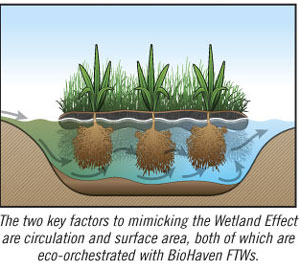A report by the United Nations Environment Program (UNEP) zeroes in on the disastrous impacts industrial farming is having – destroying the web of life – and there’s a move by US farmers to address that.
"Our Nutrient World" details how industrial farming saturates ecosystems with nitrogen, phosphorus, and other nutrients, massively altering the natural balance and causing a "web of water and air pollution."
Excess nutrients create dead zones in rivers, lakes and oceans, because they encouage toxic algae blooms that choke off oxygen from marine life. Nitrogen, which also spews from burning gasoline in vehicles, has become a major contributor to climate change.
"Just like the carbon cycle is disturbed, the nitrogen and phosphorus cycles are also disturbed. Except these are disturbed even more. We’ve doubled the nitrogen going into the environment over the past 100 years," says Professor Mark Sutton, from the Centre for Ecology & Hydrology, lead author of the report.
80% of the nitrogen and phosphorous used for fertilizer goes on crops that feed confined animals. Added to that is the intense run-off of nutrient-infused animal waste at large-scale meat manufacturing facilities that ends up in waterways.
UNEP says these nutrients can be cut by 20 million metric tons by 2020 by going back to original methods of fertilization – using animal waste to fertilize crops and planting cover crops that naturally fix nitrogen in the soil, as in organic agriculture. They also recommend halving consumption of animal protein "among populations consuming high rates."
Farmers React
The Mississippi River is a prime example of this cycle. For decades, farmers in our nation’s breadbasket have proven that even this massive river can be deluged with excess nutrients.
They flow through the river down to the Gulf, resulting in a dead zone that now spans 6,700 square miles – the devastation to gulf ecosystems costs fisheries $2.8 billion per year, reports the New York Times.fracking could lead to a
Incredibly, the boom in natural gas fracking is leading to a resurgence in nitrogen fertilizer production in the US.
One solution is to restore wetlands that naturally filter out excess nutrients. Farm groups are also experimenting with man-made floating islands made from recycled bottles and seeded with native plants.

There’s even a company that specializes in building these islands, aptly named Floating Islands International.
Based in Montana, its BioHaven island creates a "concentrated wetland effect."
Inspired by natural floating peat bogs in northern Minnesota, native plants support biological processes that consume the fertilizer and thus clean the water.
A BioHaven island starts with a mat of material made from recycled plastic bottles. Native seeds are added and the plants send roots through the bottom of the mat. That creates microbes that consume the fertilizer, which cleans the water and provides food for fish.
"Microbes are responsible for breaking down nutrients and other water-borne pollutants, but to be effective, they need a surface to stick to," says Floating Islands International. "The floating island matrix, with its dense fibers and porous texture, is the perfect surface area for growing large amounts of microbes (in the form of biofilm) in a short time. Nutrients circulating in the water come into contact with these biofilms and are consumed by them, while a smaller fraction is taken up by plant roots. Suspended solids slough off into the benthic zone below the island. Organic solids stick to the biofilms and become the base of the freshwater food web."
Massive flood plains that once existed in the region used to naturally filter the Mississippi River, but they’ve been replaced by two million acres of corn, which adds to the problem because it requires high nitrogen inputs. In addition, wetlands have been drained and trees cut, and 110 levees prevent the land from flooding.
Floating Islands International has installed almost 5000 BioHavens around the world.
Here’s their website:

